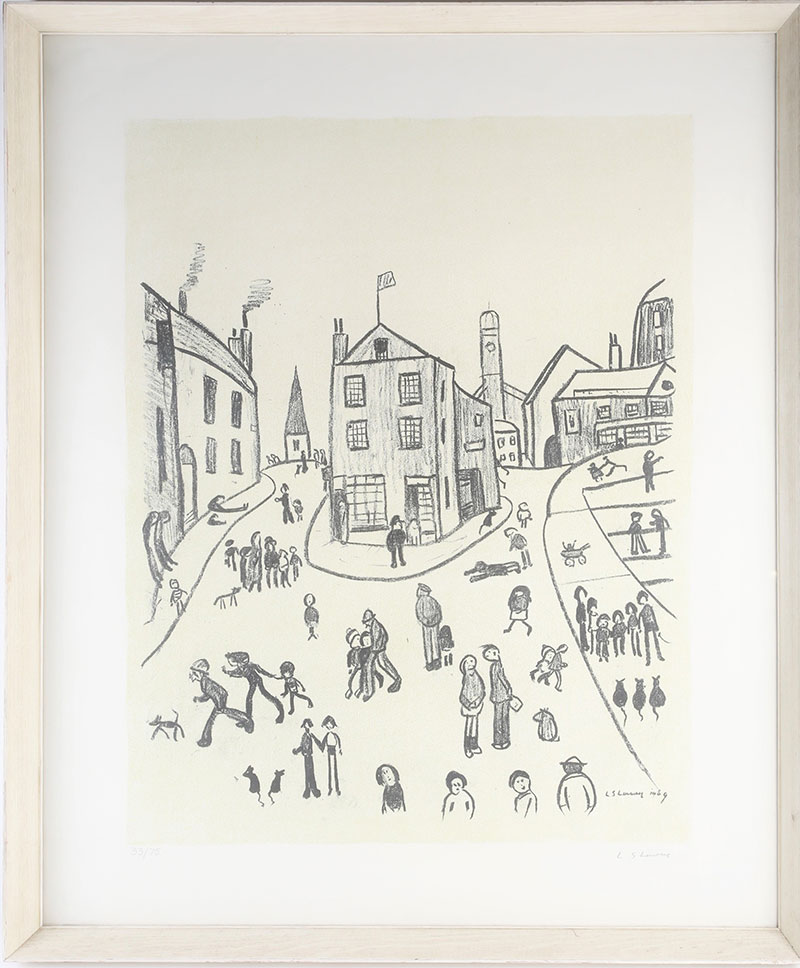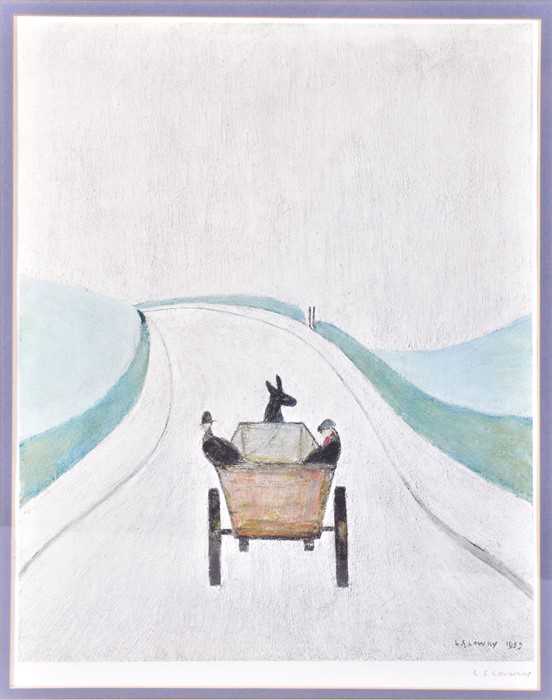A Guide to the Work of Laurence Stephen Lowry
In adult life, Lowry worked as a rent collector by day, painting during evenings and weekends
04/08/2025
Few 20th-century British artists are as instantly recognisable and as beloved as Laurence Stephen Lowry. Born in Manchester in 1887, he is known for his distinctive depictions of industrial northern England, which capture a time and a people with affection and a deceptive simplicity.
Lowry grew up in the industrial districts of Pendlebury and Salford, places that would provide lifelong inspiration for his painting. As a child, he was introspective and observant, showing an early interest in drawing. In adult life, Lowry worked as a rent collector by day, painting during evenings and weekends, which allowed him to minutely observe the daily rhythms of working-class life.
Laurence Stephen Lowry 'The Three Cats, Alstow'
Lowry's formal education included studies at the Manchester School of Art, where he was taught by the French Impressionist Pierre Adolphe Valette. There, he developed a keen eye for the effects of light, which he used to dramatic effect in his brooding seascapes and haunting portraiture. However, he is probably best known for his naïve depictions of industrial Northwest England. Lowry's paintings are instantly recognisable with their bustling mill scenes, looming factory chimneys, and the famous, mostly expressionless, "matchstick men" and women that populate his work. Works such as "Coming from the Mill" (1930), "Going to the Match" (1953), and "Going to Work" (1943) are celebrated examples of his evocative portrayal of urban life. He often claimed only to use the colours flake white, ivory black, vermilion, Prussian blue, and ochre, which gave his scenes a muted atmosphere.
Yet, beyond their surface simplicity, Lowry's paintings possess great depth. His figures, though stylised and uniform, convey a sense of community and resilience amidst the harsh realities of industrial England. As the artist himself said in a Tyne Tees interview in 1968, "I've a one-track mind, sir. Poverty and gloom. Never a joyous picture of mine you'll see. Always gloom. I never do a jolly picture."
Laurence Stephen Lowry 'The Cart'
An artist recognised in his lifetime, Lowry exhibited regularly at the Royal Academy from the 1930s onward and was made an official war artist in 1943. In 1953, he was appointed an Official Artist at the coronation of Queen Elizabeth II. Today, Lowry's paintings are held in major collections and public galleries, most notably The Lowry at Salford Quays. Tate Britain held a retrospective dedicated to Lowry in 2013 and features several pieces in its permanent collection.
Lowry's enduring appeal lies in his ability to capture the spirit of a place and its people. His paintings evoke a nostalgia for a bygone era while acknowledging the struggles and pleasures of ordinary life. Collectors and institutions prize his work for its cultural significance as well as its aesthetic appeal.
Laurence Stephen Lowry 'Street Scene'
Here at Dawsons, our expert team of valuers have sold many examples of Lowry's work, with several pieces fetching impressive sums. While prices vary depending on the medium and provenance, original paintings and sought-after limited edition prints often command substantial figures. Recent successful sales include the sketch "Charles the Cat and Sun", which sold for £4,000 in April 2025.
Related Articles
How Can I Tell if I Have an Original Lowry?
How Much is an Original Lowry Worth?
Buy or sell Lowry art with Dawsons
Our team of experts make it simple to sell art online or buy fine art at auction. Dawsons Auctioneers provide accurate valuations, competitive results, and trusted advice every step of the way. Get in touch today to find out what your art is worth.
Call us on 0207 431 9445 or email us on info@dawsonsauctions.co.uk


